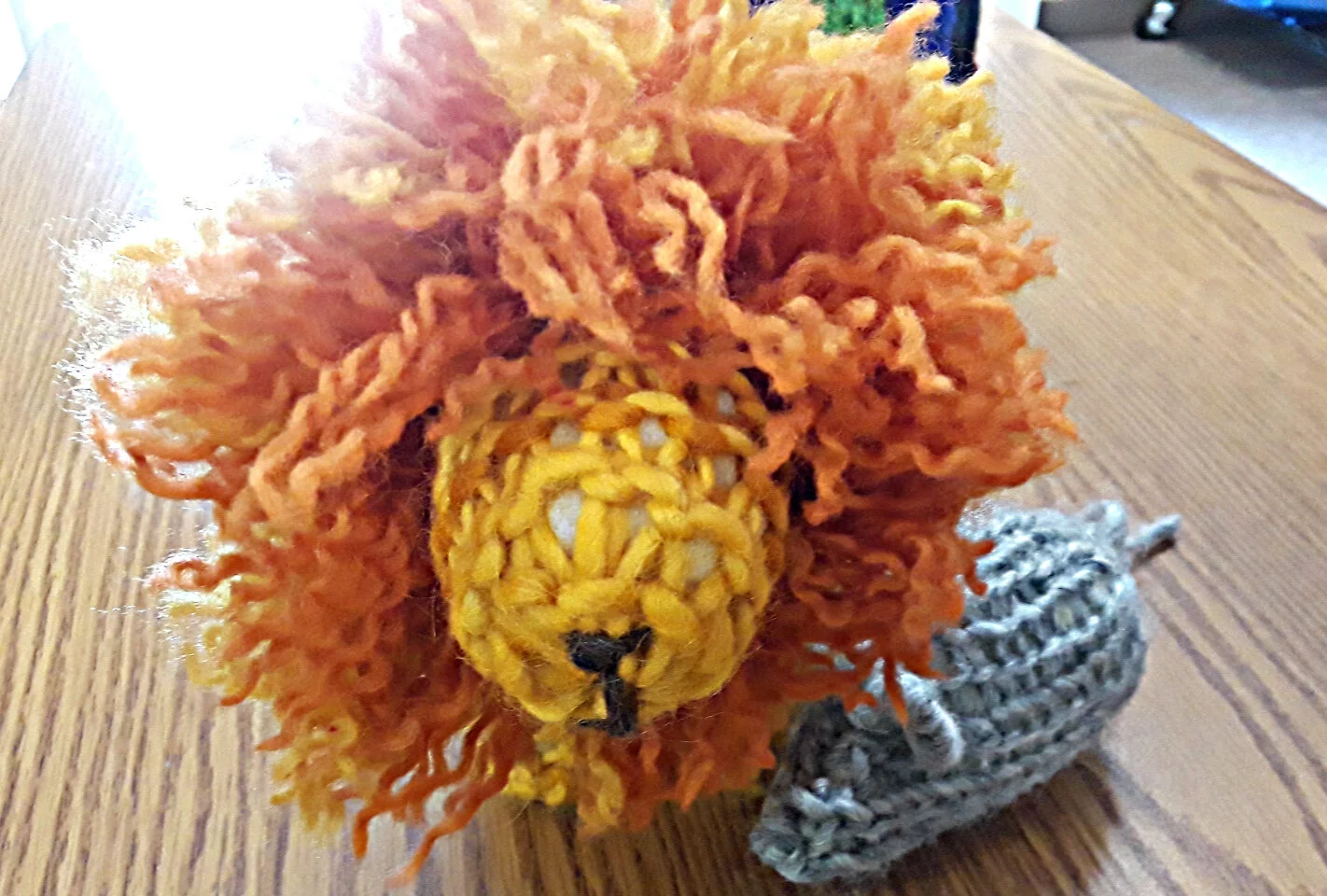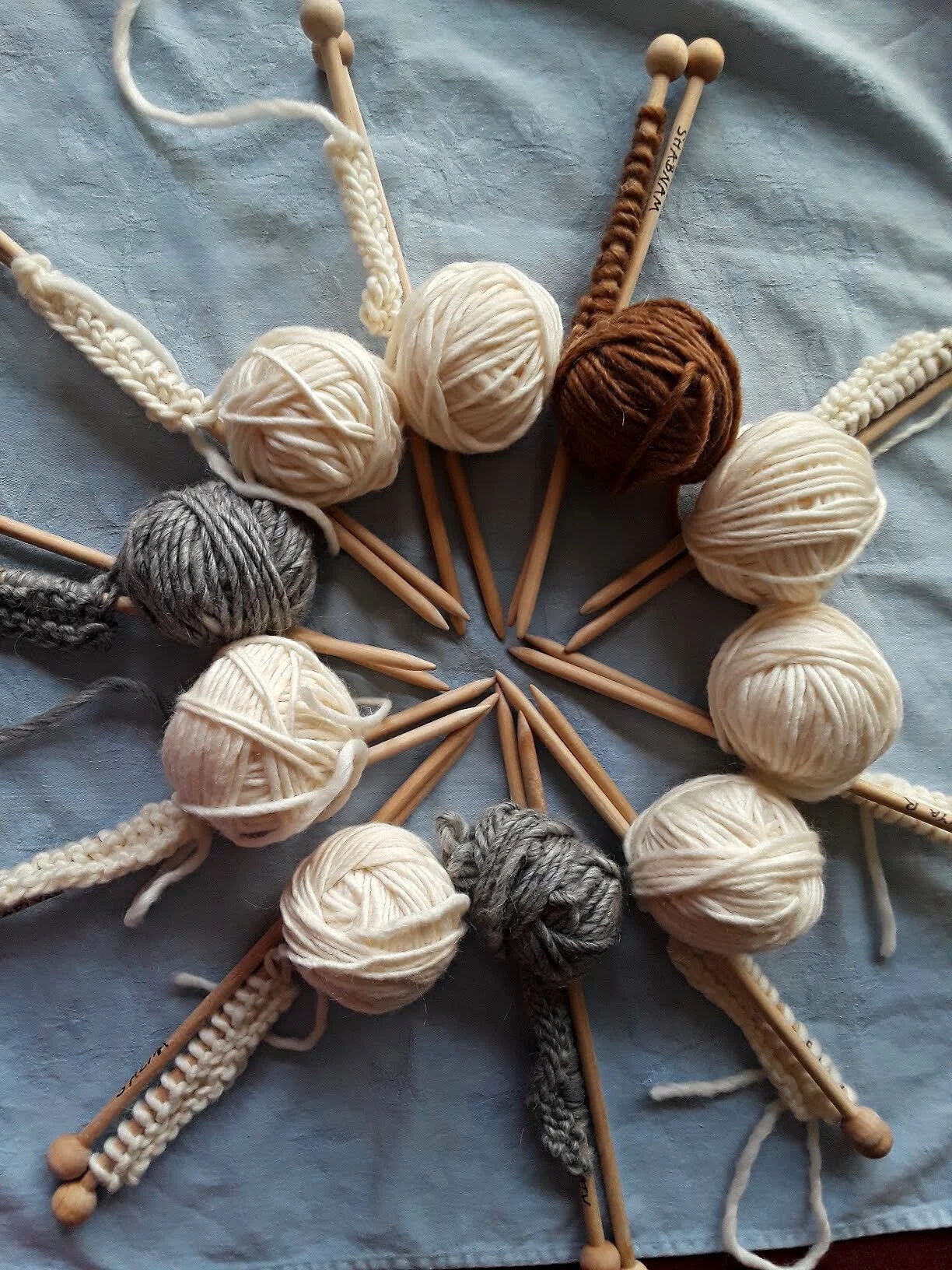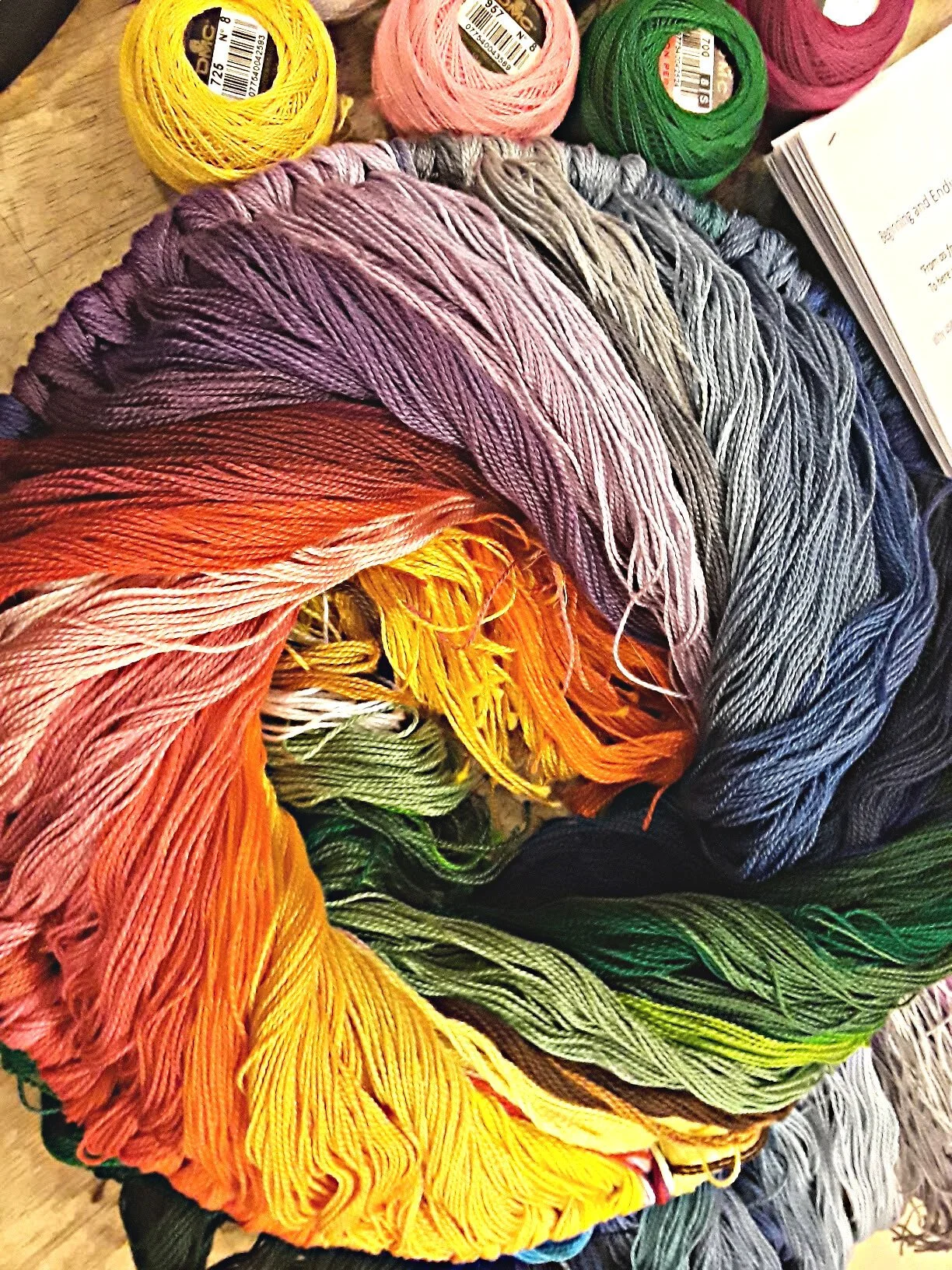Beginning and Ending Verses in Handwork
We’re excited to share the second of 3 guest posts from author, educator, and all around amazing human, Elizabeth Seward! Elizabeth brings decades of experience, and will be sharing her insights into Waldorf handwork.
Verses bring a sense of beginning and closing to a handwork class.
Why use handwork verses?
“From as far as the stars
To here where I stand ...”
Many teachers and homeschooling parents ask for verses with which to start and end a class. There are many, and I will share why and how I select verses, and share some criteria for my selection. The best verses speak to you directly; you can picture yourself and your students speaking together; and they offer lasting value.
(Missed part one? Click here!)
Handwork is all about beginnings and endings: cutting and finishing a thread; changing color in striped knitting or crochet; cutting fabric for an animal, then closing the last seam. Ideally, these transitions are calm, firm, neat, and orderly.
Handwork classes give us endless opportunities to coach our students in ways of beginning and ending, and this will spill over into other areas. Life itself is all about beginnings and endings.
To many people, verses can seem artificial, too ‘holy’, stilted, and an imposition on the freedom of others. I also had trouble recommending verses to others for the same reasons. In ‘old school’ traditions, we were expected to write our own verses, as these would be the most authentic to share with the particular students in front of us, heart to heart. Just in recent years, I have overcome these objections, and teaching both in large classes in a school setting, and teaching smaller homeschooling classes, I have found great worth in beginning and ending a class with an appropriate verse. I now recognize the value for the class as a whole, for the individual student, and for me personally.
“Speaking a verse together affords us all a moment of quiet reflection, and a chance to recognize, however subtly, that we are entering into a different space and time set aside for a specific purpose.”
What could verses do for your handwork sessions?
On a practical level, it allows me time at the beginning of a class to take the measure of the group as a whole, and to identify children who may need a little extra attention, oversight, or encouragement that day. I can gauge how smoothly the class will progress, and begin to shift my plan to more stories, more movement, more quiet, or whatever is needed to ensure a successful class.
On a deeper level, it allows the children to shift focus from whatever they were doing before handwork, allowing a breathing space, just as it does at the end, preparing for the next class. It’s important for each teacher to be aware of the students’ whole day, giving the students the experience that teachers work as a team, an integrated continuum, a circle of care surrounding the children. This provides an authentic experience that education is part of an integrated whole, and not fragmented. Awareness of their other classes is demonstrated by coming to a calm close at the agreed time, and our colleagues’ need for starting their class in an orderly way. This also applies to homeschooling. Adhering to the proposed timetable for the day - within reason - shows that one subject is not implicitly valued above another; that we honor all parts of the curriculum, because as educators we honor each part of the human being. Head, heart, and hands are one unified whole.
What verses or poetry inspire you?
Choosing handwork verses
Both the form and the content of the verses are crucial. I like to use verses that remind us about purpose, individual path, community, and the meeting of the seen and unseen in each moment of individual creativity. The rhythm of the words is very important. Avoid mindless hammering or unthinking floatiness. The meaning of the words should be clear, and you will have to refresh this occasionally. Using appropriate gestures in the early grades prompts the memory and enlivens their speech. In a public charter school or mixed homeschool setting, I would talk about ‘stretching verses’ so there was no suggestion of inappropriate spirituality. Avoid falling into the trap of staying too long in the land of cute little fairies and gnomes. Perhaps this is acceptable in the first half of first grade, as a bridge from early childhood, but move forward.
Don't allow yourself to get root-bound! Use ‘real’ poetry from about 6th grade on.
“Your task as a teacher or parent is to be sure they are secure in where they are (give them roots) but also help them to find the courage to fly (give them wings). ”
I have found that certain phrases will stick with the children, sometimes for an astonishingly long time. For example, I used to bring classes to a close with “time has flown on the wings of an eagle” and now there are several 40 year old former students who have quoted this back to me. If we can use high level, beautiful, language, rich in healthy imagery, this will affect the students deeply.
“Verses” don’t have to be spoken; songs or even wordless melodies are a wonderful way to begin and end a class.
Enjoy the process of incorporating verses into your handwork class- it's all worth it!
Using handwork verses
Check first with any teacher colleagues that your verses are not overlapping. Each teacher has a different approach to each verse, and this will be subtly unsettling and confusing for the children.
Search for verses and poems online (or on pinterest), ask colleagues, or adapt or write your own. These will resonate most strongly with you and with the children in your care.
You must know the verse solidly by heart first, or they will never speak it securely.
You must be consistent. If you accidentally change a word, the class will always stumble there. Experience speaks here.
Children learn much more quickly than adults; have them jump in when they can, but insist on clarity and meaning in their speech.
Gestures can be helpful, effective until about 3rd grade, and helpful in the learning process. It’s easier to learn by heart while you are moving.
Occasionally designate a student as ‘leader’ for a verse. You will learn a great deal by observing them, and this will reflect to you how effective and clear your expectations have been.
If you have incorporated gestures with the verse or song the students have learned, ‘speak’ it silently. This strengthens the memory and deepens the imaginative pictures.
Using verses to hold the space for calm and orderly beginnings and endings to a class is a cornerstone of class management. People who sing together, breathe together, speak together can also be silent together and can work well together.
“Our time for now has ended,
Our work for now is done, …”
Related content:
Elizabeth Seward, PhD has been in a Waldorf classroom since 1984 as a parent volunteer, handwork assistant, High School teacher, lead handwork teacher, class teacher, and teacher educator and mentor.
For three years, Elizabeth co-directed the teacher preparation program in Los Angeles (WISC) and opened the San Diego program. She was a member of the Advisory Board and a contributing editor to Living Crafts magazine for six years. Since 2013, she and a colleague have been offering annual “Wonder and Wisdom of Handwork” conferences in retreat settings for teachers, and in recent years, have expanded to include a July conference for homeschoolers.
In 2019, Elizabeth published her first book in a series of three for handwork teachers, classroom teachers and home-schooling parents: Teaching Through Stories: Jane and Jeremy Learn to Knit (forthcoming are “how to spin”, and “how to sew”). Elizabeth earned her doctorate from Claremont Graduate University in the historical and philosophical foundations of education in May 2005. She holds an M.A. in Second Language Learning, and an interdisciplinary M.A. in Spirituality and Education (2018). Her thesis: “Knitting: A Gateway Contemplative Practice.” Elizabeth’s three children attended Waldorf schools in the US and Germany, and her four grandsons are thriving as they begin their Waldorf journey.
She teaches knitting, spinning, and other textile arts to ad hoc community groups, and shares her enthusiasm for Waldorf Education with parents of young children, home-schooling parents and graduate students. For information about her book and more —>
1st Grade Handwork curriculum (online!)
Instagram: @elizabethesewardhandwork
Website: elizabethsewardauthor.com






